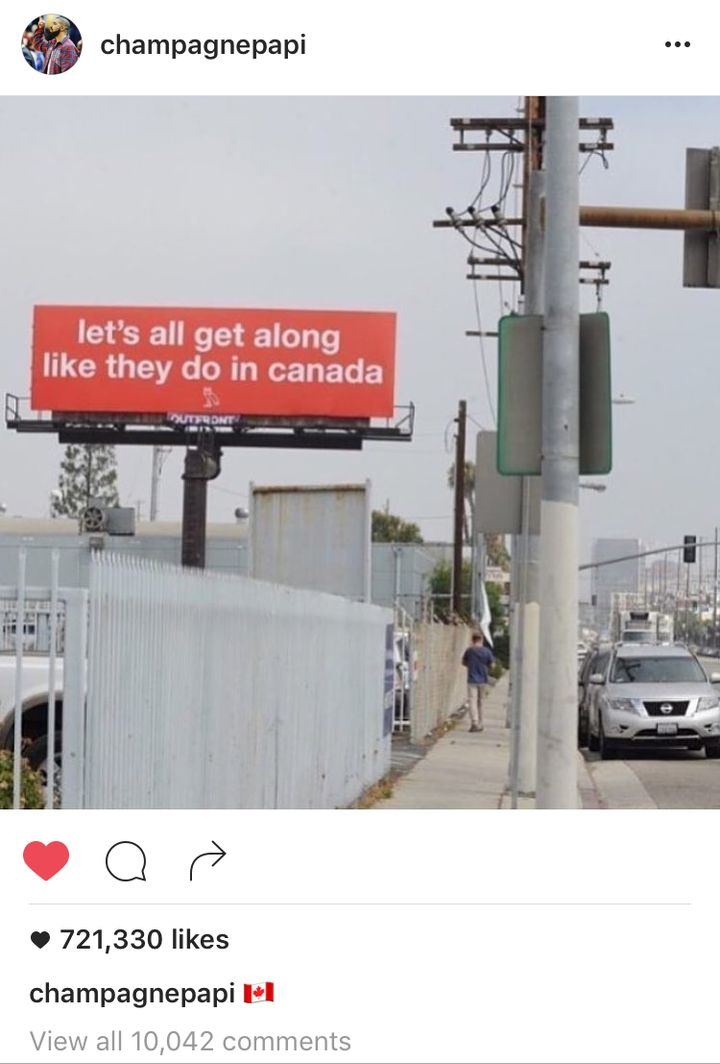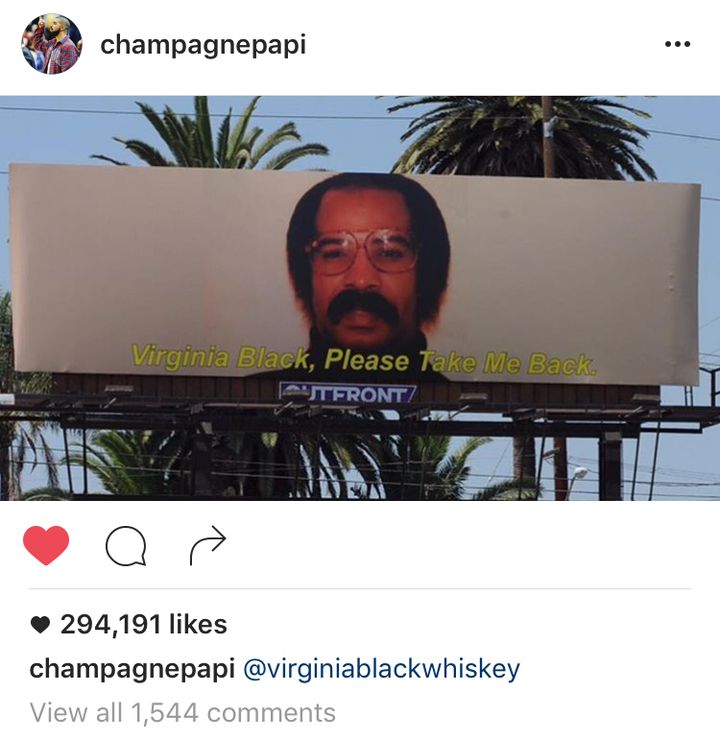
“Calabasas is the new Abu Dabi” reads the brightly colored Los Angeles billboard. It’s simple, cryptic, strangely alluring. And it’s unmistakably Drake.
For decades, billboards have been the bread and butter promotion tool for musicians and celebrities looking to connect with fans. Whether it’s to build hype for their latest album, movie, or even just their personal brand, billboards have been a go-to medium for years, defining movements and generations along the way.
Drake’s billboards are no different. They are from a simpler time of self-promotion when a phone book was the closest thing we had to a social platform. Since then, times have certainly changed. Social media platforms like Instagram, Snapchat, Facebook, etc. have propelled out-of-home (OOH) advertisements, like billboards, into mainstream culture. It’s not by accident that I first saw Drake’s billboards on Instagram. Today, the tag-team combo of social and OOH allows artists to create experiences for fans that seamlessly move across our offline and online worlds.
Today OOH is considered trendy and better yet, it’s insanely effective at driving earned media. Consider Drake’s most recent spate of billboard ads. They are intentionally ambiguous. Drake’s own social posts of the billboards helped stoke discussion and speculation across the web. For fans, spotting the billboards was like a real-life social scavenger hunt. Although these billboards were found in the real world, and only around greater Los Angeles, online virality was baked into them from the beginning. They were created to be shared. Even before you could post it to your own feed, Drake’s billboards had already found a second home across the world’s social feeds.
The mysterious creative and placement of the ads drove conversation, adding depth to an otherwise simple advertisement play. Plus, the billboards leverage both existing audiences and those who’ve probably never heard of Drake -- if those people even exist. This interplay between real-world advertising and digital syndication is perfect for sharing a celebrity's message and ensures that message doesn’t get buried in someone’s feed.
Of course, it’s not just Drake using billboards. Other celebrities and entertainers are using the ads to their advantage as well. There are the stories of major DJs buying out all of the advertising space in Las Vegas, blanketing every billboard, sign, and banner on the strip in their image. These buy-outs are not by accident, or driven by ego for that matter. They are purposeful and well-planned, part of a larger promotion strategy playing off OOH’s ability to create a sense of exclusivity. You have to be there to experience it. The moment feels authentic to fans and trust me, people are stoked to take pictures and share with friends. There’s your “real-time social amplification” marketing department. It’s the kind of organic response boardrooms of marketers dream about getting. Almost instantaneously, a billboard can become a social advertisement across the web just from shares and posts.
That said, probably the most notable benefit to OOH ads for celebs is that they are unavoidable. Unlike digital ads which contend with ad blocking programs and annoyed viewers, OOH is basically impossible to block. Sure a person can look away or close their eyes, but when the message is simple and immediate as in the case of Drake’s billboards, viewers are hooked.
For celebs, this immediacy plays to their advantage. They are recognizable icons. Their image alone makes people stop and soak in whatever message they are promoting. Whether that message alludes to future releases or just congratulates other celebrities for the work they do, people are sure to see it regardless. That real-life connection goes much farther than any digital ad. There’s a reason people are sharing photos of billboards and not the banner ads from websites.
At the end of the day, celebrities are savvy self-promoters. It’s why they’ve reached the level of success they enjoy. OOH offers celebrities and musicians a way to cut through the digital noise. It’s real, it’s in your face, and it’s unavoidable. As social media matures and the quest for more original content grows, we will see more celebrities adopting guerrilla tactics of promoting themselves, creating real-life experiences primed to go viral. People forget that the goal of any advertising is to connect with people, if only for a single moment, and to motivate them to share that experience with others. OOH offers that moment again and again. Drake knows this better than anyone.

